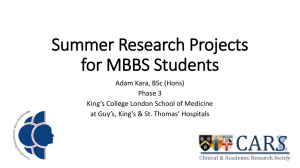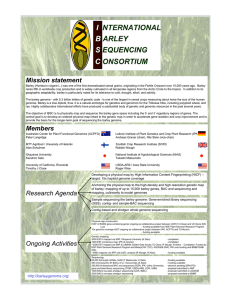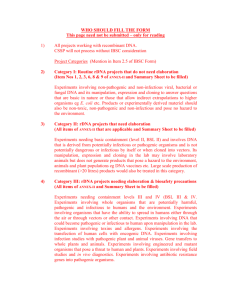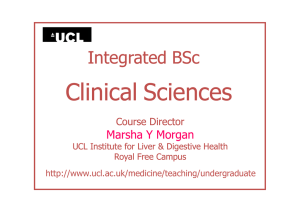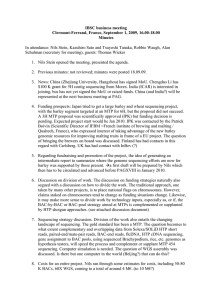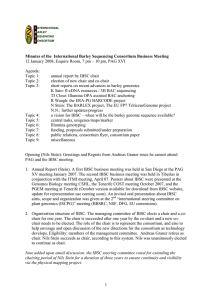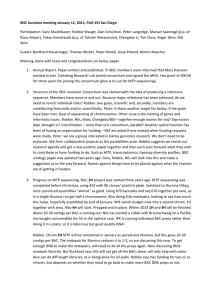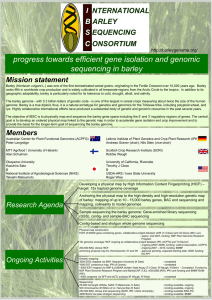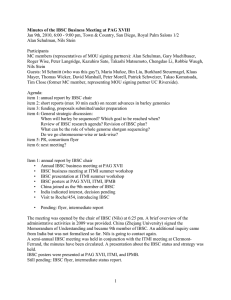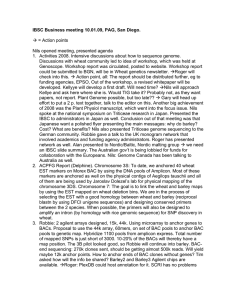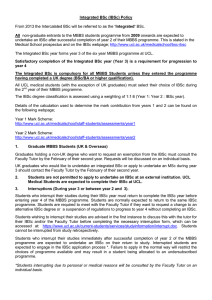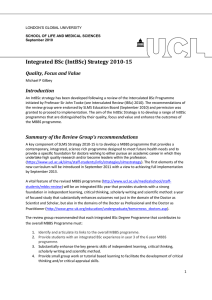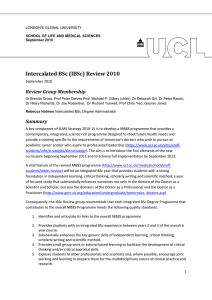Document 10693987
advertisement
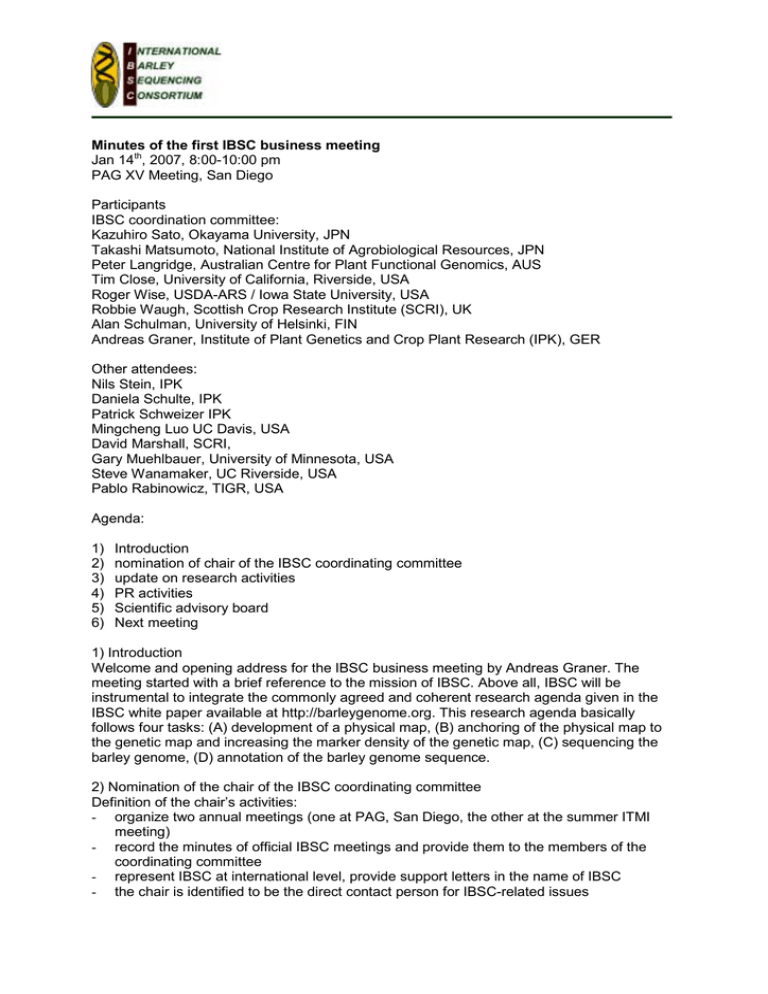
Minutes of the first IBSC business meeting Jan 14th, 2007, 8:00-10:00 pm PAG XV Meeting, San Diego Participants IBSC coordination committee: Kazuhiro Sato, Okayama University, JPN Takashi Matsumoto, National Institute of Agrobiological Resources, JPN Peter Langridge, Australian Centre for Plant Functional Genomics, AUS Tim Close, University of California, Riverside, USA Roger Wise, USDA-ARS / Iowa State University, USA Robbie Waugh, Scottish Crop Research Institute (SCRI), UK Alan Schulman, University of Helsinki, FIN Andreas Graner, Institute of Plant Genetics and Crop Plant Research (IPK), GER Other attendees: Nils Stein, IPK Daniela Schulte, IPK Patrick Schweizer IPK Mingcheng Luo UC Davis, USA David Marshall, SCRI, Gary Muehlbauer, University of Minnesota, USA Steve Wanamaker, UC Riverside, USA Pablo Rabinowicz, TIGR, USA Agenda: 1) 2) 3) 4) 5) 6) Introduction nomination of chair of the IBSC coordinating committee update on research activities PR activities Scientific advisory board Next meeting 1) Introduction Welcome and opening address for the IBSC business meeting by Andreas Graner. The meeting started with a brief reference to the mission of IBSC. Above all, IBSC will be instrumental to integrate the commonly agreed and coherent research agenda given in the IBSC white paper available at http://barleygenome.org. This research agenda basically follows four tasks: (A) development of a physical map, (B) anchoring of the physical map to the genetic map and increasing the marker density of the genetic map, (C) sequencing the barley genome, (D) annotation of the barley genome sequence. 2) Nomination of the chair of the IBSC coordinating committee Definition of the chair’s activities: - organize two annual meetings (one at PAG, San Diego, the other at the summer ITMI meeting) - record the minutes of official IBSC meetings and provide them to the members of the coordinating committee - represent IBSC at international level, provide support letters in the name of IBSC - the chair is identified to be the direct contact person for IBSC-related issues The chair will be nominated for a period of one year, i.e. from PAG to PAG. The chair will be nominated by the members of the coordinating committee, based on the majority of votes. Following the discussion of the group Andreas Graner was nominated (8 casted ballots; 7 votes, 1 abstention). A suggestion was made that the chair is accompanied by a vice chair who could take over the business in the subsequent year. The group agreed to nominate Nils Stein as vice chair (8 casted ballots, 7 votes 1 abstention). 3) Reports about ongoing research - IPK/ACPFG/TUM High Information Content Fingerprinting (HICF) project: aim is to perform 350000 HICF – this will lead to 8 – 10 x genome coverage depending on the insert size of the newly derived libraries and those under development. One new library arrived at IPK and UC Riverside. Two further libraries are expected to arrive early 2007. To warrant public access to the libraries, it was agreed that the libraries should go into one centralized repository (i.e. CUGI, RZPD). A high priority has been given to the task of identifying such a repository. The near future plan is that ACPFG is sending the new libraries directly to CUGI and IPK. The library sent to UC Riverside from Australia will be transported to CUGI soon after PAG. (update: delivered to CUGI on Feb 5). IPK is providing a copy to SCRI. - High density genetic mapping: target is 10 – 15000 gene-based markers in barley. Where are we now? 3000 EST-PCR markers by K Sato, Okayama University (OU) 2000+ EST-SNP pilot OPA 1+2, PI TJ Close (UCR), R Waugh (SCRI), collaboration UCR, SCRI, IPK 1000 EST-SNP, -RFLP, -SSR by A. Graner, IPK 400 EST-SNP PCR by R Waugh, SCRI 4000 SFP/eQTL by R Waugh (SCRI), R Wise (USDA-ARS / ISU) Next step is to deconvolute all marker information into one unigene set: to this end an updated HarvEST assembly will be provided by TJ Close including new ESTs of OU and IPK. An additional EST clustering project will be started at SCRI (D Marshall is collecting all available trace files) Since EST identifiers for all mapped markers will be included in the nest EST assembly direct relation of mapped gene/barley unigene info will be available by probably second quarter of 2007. No further EST-mapping efforts is presently planned at Okayama University Alan Schulman submitted/will submit a proposal to apply deep 454 cDNA sequencing to retrieve eSNP information for designing and mapping of another 1000 markers in barley - High resolution mapping: availability of a high resolution genetic mapping resource is essential for efficient anchoring of the physical map. A brief discussion was started about the best way to achieve high resolution anchoring: - A RIL population of 3000 individuals is under development at ACPFG (P Langridge) - Colinearity information to Rice and Brachypodium together with data from the OPA association genetics panel in the AGOUEB and the North American barley CAP projects (R Waugh / D Marshall). - - The necessity of building up a randomly intermated RIL population according to the maize IBM population was discussed. Nils Stein opted to include development of such a population into a proposal of ETGI to EU-Framework 7. As no final conclusion was reached, the issue needs to be discussed again at next business meeting at ITMI meeting April 2007, Israel. A survey should be circulated in the barley community to collect all available information about standard mapping populations (pop. size, marker density, marker type etc.) (Nils Stein) Anchoring the physical to the genetic map: update by T Close about the status of deconvolution of BAC addresses and gene content based on overgo hybridization of 12500 probes. At current approx. 2000 unique BAC address/gene relationships are available. The goals of Tim`s NSF project are to provide BAC addresses /genetic map positions for 1000 abiotic stress related genes. The IBSC community needs to find ways to resolve the remaining BAC/gene relationships N. Stein informed about a proposal aiming at improving and anchoring of the physical map by high throughput survey sequencing of BACs to be submitted by IPK to the German Ministry of Education and Research (BMBF) in spring 2007. - Full length cDNA sequencing: Takashi Matsumoto reports that funding is secured for sequencing of 20000 fl-cDNA. Kaz Sato has already sequenced 5000fl-cDNA which will be published in 2007. Both projects are using Haruna Nijo as a haplotype. The corresponding information will be available for annotation of barley genes - Genomic survey sequencing: - an NSF proposal has been submitted (TRPGR: Sequencing the barley gene-space - PI: Agnes P. Chan, TIGR, Rockville, MD ; Co-PIs: Timothy J. Close, UC Riverside, CA; Stefano Lonardi, UC Riverside, CA; Gary J. Muehlbauer UMN St. Paul, MN; Roger Wise, USDA-ARS/ISU Ames, IA; Consultant: Pablo D. Rabinowicz (TIGR, Rockville, MD; Service providers: Jeffrey Bennetzen, UGA, Athens, GA; Ming Cheng Luo, UC Davis, CA) aiming at shotgun sequencing gene enriched libraries as well as sample sequencing of BAC clones - A Letter of Intent to JGI/DOE has been sent by T Close (and IBSC) to survey sequence on a 454 sequencing system 300 Mb arranged as pools of BACs. [update: JGI has invited a full proposal for a pilot project to sequence 100 BACs chosen on a theme of bioenergy (due March 12)]. - Kaz Sato has secured funding for 454 sequencing of 500 H. Nijo BACs originating from chromosome 3H - DATA information management within IBSC: a question had been raised how we intend to manage data/information raised in barley genomics and how we ensure efficient dissemination. A possibility will be by applying for funding for true bioinformatics projects (i.e. next call in ERA-PG). A close interaction to the resources at the International Rice Genome Project, Tsukuba would be advantageous. This issue deserves a continued discussion and needs to be prepared for the next IBSC business meeting. 4) PR activities Does IBSC have to initiate dedicated PR activities that go beyond what has been achieved so far? So far the aims of IBSC are transported via ITMI, ETGI, IBSC. A website has been initiated and will be maintained. Issue needs re-evaluation in next IBSC meeting. 5) Scientific advisory board A discussion has been initiated about the need of a scientific advisory board. As a result, almost complete unanimity was reached that there would be no immediate need for such a board because: (i) no budget, (ii) we interact already very actively. But: we should invite experts on informal basis for IBSC meetings. This will be easiest to achieve in prospect of the planning of IBSC meetings at the Plant and Animal Genome Conferences in San Diego. 6) next meeting The next IBSC meeting will be among participants of the ITMI/Aaronssohn meeting at Lake Gallilee, Israel, April 2007. The agenda for IBSC meetings should be circulated in advance to gather input on the topics of people that will not be able to join the meeting. Gatersleben Feb 19, 2007 Andreas Graner, Nils Stein

